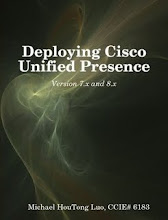SIP has become dominant in UC(Unified Communications) now. If you're interested in learning/practicing SIP, CUBE, SBC, etc., here are some ideas.
Software lab is always better than hardware lab, because of cost, power consumption, noise, portability, etc. Unless you want to test transcoding (which requires hardware DPS, like PVDM), software is sufficient for most cases.
If you are reading this, you are probably already familiar with lab software like GNS3, EVE-NG, Virl(CML), etc. I'll use GNS3 as an example.
There are different virtual images on GNS3. Each one has its pros and cons. I personally like IOL (a.k.a. IOU) because it's lightweight (as little as 256MB per instance) and fast boot time. Most of the L3 IOL image comes with CME(CallManager Express) function. You may use CME as a IP PBX and register SIP phones to it. Codec is limited to G.711 only.
! Global configuration for VoIP, with SIP sub-section
voice service voip
allow-connections sip to sip
sip
bind control source-interface eth0/0
bind media source-interface eth0/0
registrar server expires max 1200 min 300
!
voice class codec 1
codec preference 1 g711ulaw
!
! Global config for SIP registration(CME)
voice register global
mode cme
source-address 192.168.28.10 port 5060
max-dn 20
max-pool 10
authenticate register
!
! Create DNs to be used in later config
voice register dn 1
number 2001
!
! Each register pool is a phone. MAC address doesn’t matter
voice register pool 1
id mac 0000.0000.0001
number 1 dn 1
dtmf-relay rtp-nte sip-notify
voice-class codec 1
username user1 password pass1
Then you may download SIP softphone apps, such as X-Lite(now known as "Bria", MicroSIP, etc. Register SIP softphone to CME should be straightforward. Make calls between two or three SIP phones and use debug commands (such as "debug ccsip message") to view the SIP messages is a good starting point.
Most of softphone allows single instance only. You may work around that by using Sandboxie or virtual machines (such as VMware, VirtualBox, etc.)
If you want to explore the features of CUBE virtually, you may use CSR100v virtual router, which can also be run on GNS3. There is no license needed.
If you want to play with codecs (such as g.729) or media resources (such as transcoding), you'll need a hardware router with DSPs. You may get a Cisco ISR4K from eBay for about $200. And get a PVDM4-32 for about $100. I'd get the routers comes with license (UC/K9 or VSEC/K9), though Cisco didn't seem to enforce CUBE license (yet).



No comments:
Post a Comment